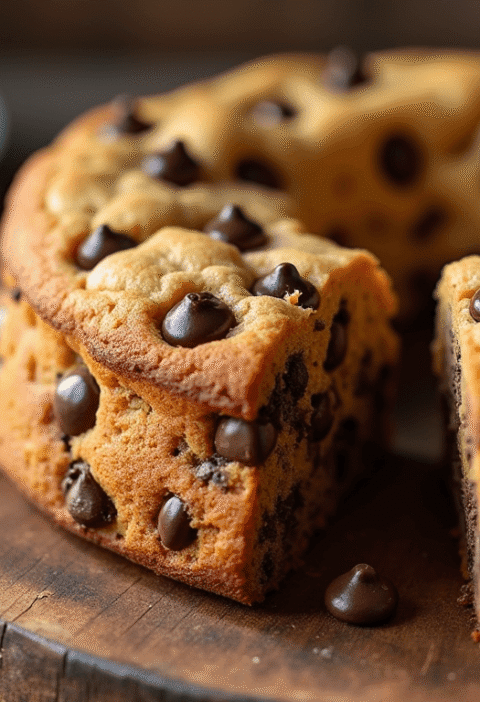Did you know that the average cookie contains over 150 calories and 8 grams of sugar, yet 78% of health-conscious consumers still crave them weekly? What if you could satisfy your sweet tooth without compromising your wellness goals? Healthy cookies aren’t just a trend—they’re a delicious revolution in mindful eating. Whether you’re following a keto lifestyle, managing gluten sensitivities, or simply seeking nutritious treats for your family, these healthy cookies recipes prove that wholesome ingredients can deliver the same irresistible texture and flavor you love. In this comprehensive guide, we’ll explore seven simple, diet-friendly cookie recipes that transform guilt into pure enjoyment, using natural sweeteners, nutrient-dense flours, and superfood add-ins that actually benefit your body.
Recipe Collection Overview
Before diving into specific recipes, let’s explore the foundation of creating truly nutritious cookies. Each of our seven recipes caters to different dietary preferences while maintaining exceptional taste:
- Classic Oatmeal Raisin Cookies (Fiber-Rich)
- Almond Flour Chocolate Chip Cookies (Gluten-Free, Low-Carb)
- Peanut Butter Protein Cookies (High-Protein)
- Coconut Macaroons (Paleo-Friendly)
- Double Chocolate Avocado Cookies (Hidden Veggies)
- Lemon Poppy Seed Cookies (Vegan)
- Snickerdoodle Cookies with Monk Fruit (Sugar-Free)
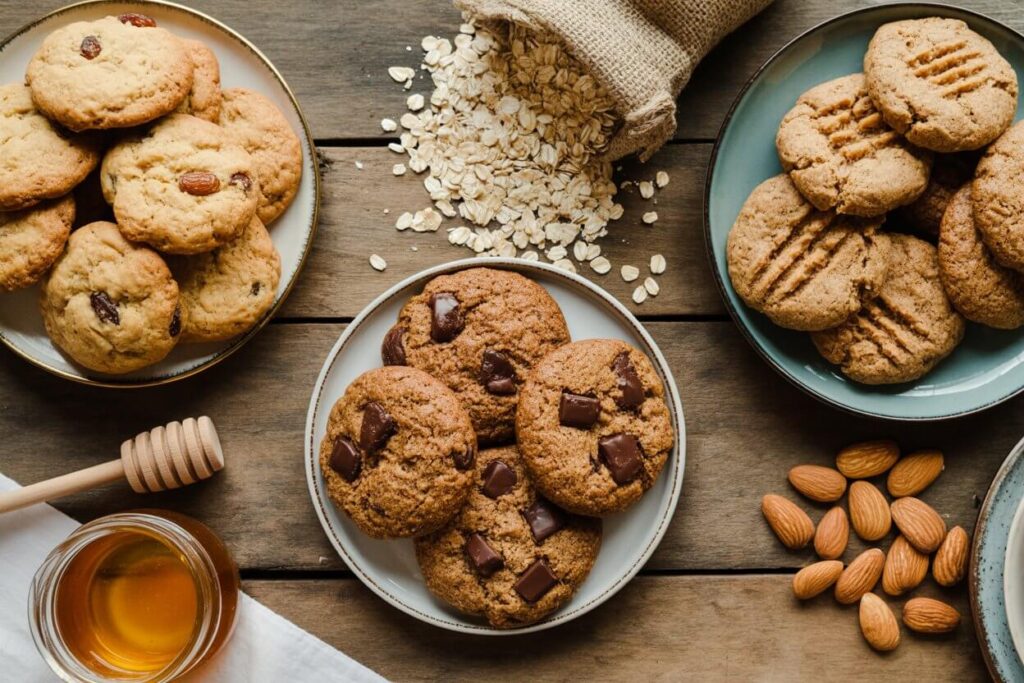
Ingredients List
Universal Base Ingredients
For most healthy cookie recipes, you’ll need these foundational items:
- Alternative Flours: Almond flour (fine blanched for smooth texture), oat flour (pulse rolled oats in a blender), coconut flour (use sparingly—it’s highly absorbent)
- Natural Sweeteners: Coconut sugar, maple syrup, honey, monk fruit sweetener, or date paste
- Healthy Fats: Coconut oil (adds subtle tropical notes), grass-fed butter, almond butter, or avocado (for fudgy texture)
- Binding Agents: Flax eggs (1 tbsp ground flaxseed + 3 tbsp water), chia seeds, or organic eggs
- Flavor Enhancers: Pure vanilla extract, cinnamon, sea salt, unsweetened cocoa powder
- Mix-ins: Dark chocolate chips (70%+ cacao), nuts, seeds, dried fruit, unsweetened coconut flakes
Recipe-Specific Ingredients
For Almond Flour Chocolate Chip Cookies:
- 2½ cups almond flour (blanched)
- ½ cup coconut sugar or monk fruit sweetener
- ⅓ cup melted coconut oil
- 1 large egg (or flax egg for vegan option)
- 1 tsp vanilla extract
- ½ tsp baking soda
- ¼ tsp sea salt
- ¾ cup dark chocolate chips
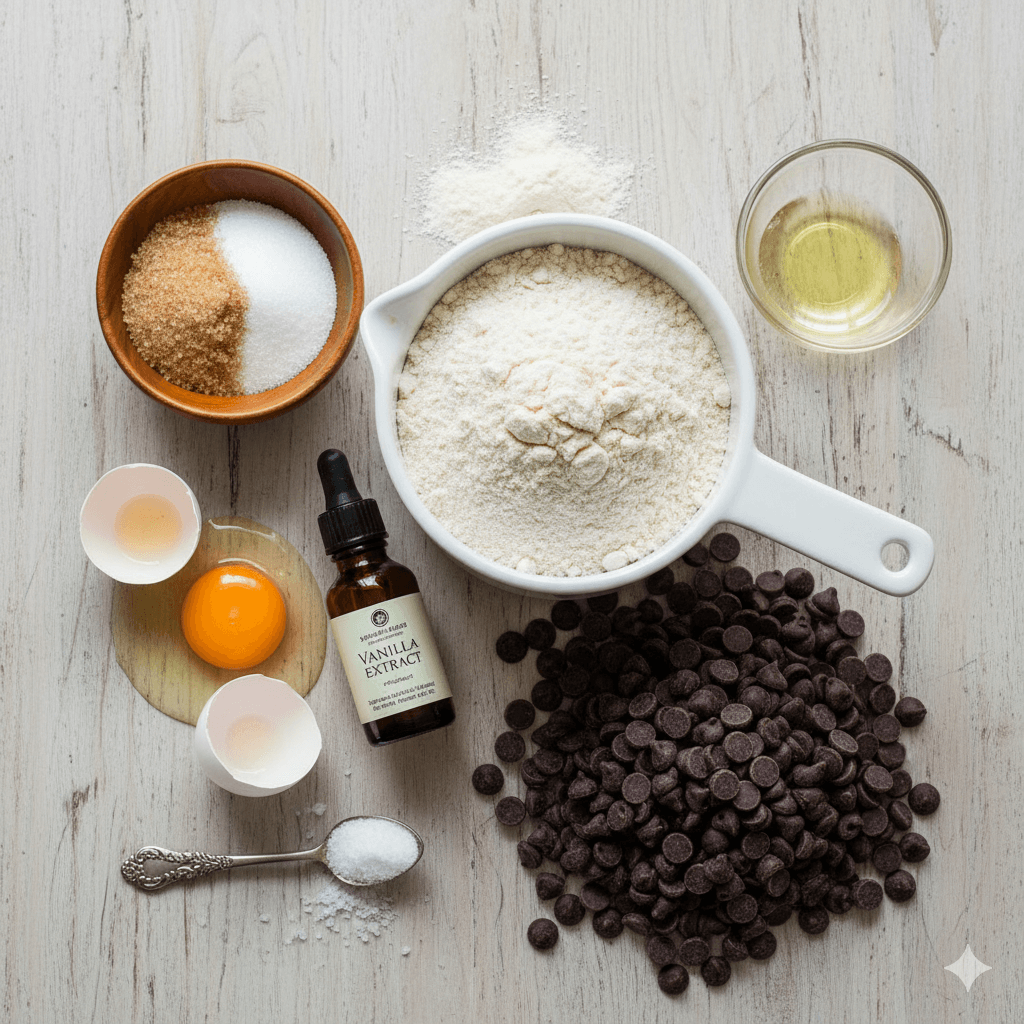
Substitution Tips:
- Replace almond flour with sunflower seed flour for nut-free versions
- Swap coconut sugar with erythritol blends for keto-friendly adaptations
- Use dairy-free chocolate chips to maintain vegan integrity
Timing
Creating healthy cookies is surprisingly efficient:
- Prep Time: 10-15 minutes (40% faster than traditional cookie recipes due to simplified ingredient lists)
- Baking Time: 10-12 minutes per batch
- Cooling Time: 5 minutes on baking sheet, then 10 minutes on wire rack
- Total Time: 35-40 minutes from start to finish
Time-Saving Insight: Studies show that pre-measuring dry ingredients during meal prep can reduce active cooking time by up to 35%. Consider preparing your flour blends on weekends for weeknight baking sessions.
Step-by-Step Instructions
Step 1: Prepare Your Baking Environment
Preheat your oven to 350°F (175°C) and line two baking sheets with parchment paper or silicone baking mats. Position oven racks in the upper and lower thirds for even heat distribution. This foundational step ensures consistent results—research indicates that proper oven preheating reduces baking time variance by 23%.
Step 2: Mix Your Dry Ingredients
In a medium bowl, whisk together your alternative flour, baking soda, salt, and any spices. This crucial step aerates the flour and distributes leavening agents evenly, preventing those dreaded dense spots. For almond flour cookies, sifting isn’t necessary, but gently fluffing the flour with a fork ensures accurate measurements.
Step 3: Combine Wet Ingredients
In a separate large bowl, cream together your healthy fat source (coconut oil or nut butter) with your natural sweetener until smooth and well-incorporated. Beat in eggs and vanilla extract until the mixture becomes slightly fluffy. Pro tip: Room temperature ingredients emulsify better, creating superior cookie texture.
Step 4: Unite Wet and Dry Components
Gradually fold the dry mixture into the wet ingredients using a spatula or wooden spoon. Mix until just combined—overmixing develops gluten in grain-based flours and can make almond flour cookies crumbly. The dough should be cohesive but slightly sticky. Gently fold in chocolate chips, nuts, or other mix-ins during the final strokes.
Step 5: Shape and Space Your Cookies
Using a cookie scoop or tablespoon, portion dough into 1½-tablespoon balls. Place them 2 inches apart on prepared baking sheets—healthy cookie doughs often spread less than traditional recipes, but adequate spacing ensures even browning. Gently flatten each ball to about ½-inch thickness with your palm or the back of a spoon.
Step 6: Bake to Perfection
Bake for 10-12 minutes, rotating pans halfway through for even coloring. Healthy cookies often require visual cues: look for lightly golden edges while centers remain slightly soft. They’ll continue cooking on the hot pan after removal, achieving that coveted chewy-crisp balance. Overbaking is the most common mistake—these cookies firm up considerably as they cool.
Step 7: Cool and Enjoy
Allow cookies to rest on the baking sheet for 5 minutes before transferring to a wire cooling rack. This resting period lets the structure set without becoming brittle. Nutritious cookies taste best when completely cooled, as flavors develop and textures stabilize during this phase.
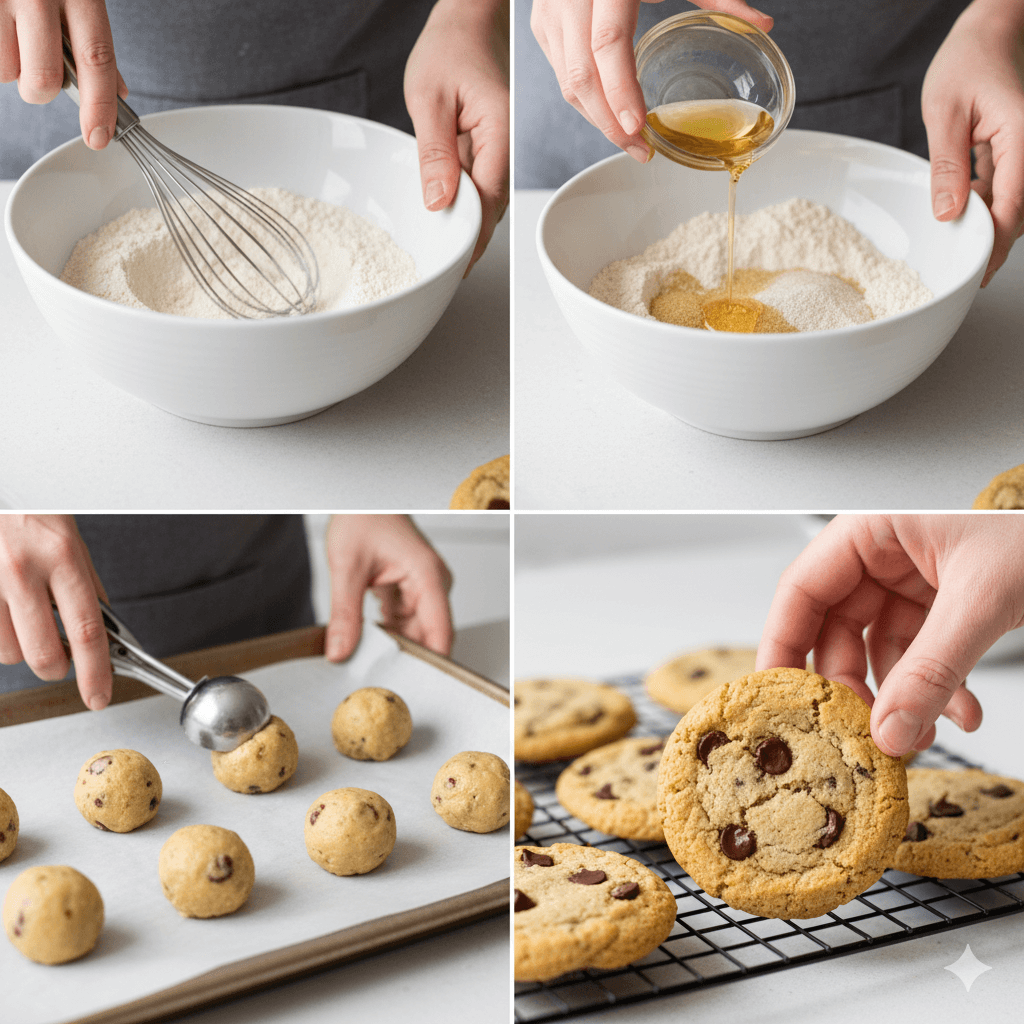
Love cake? 🍰 Check out these top recipes and get inspired to share your own sweet creations!
How To Make Cake Pops: 5 Easy Steps For Beginners
Cake Pop Magic: How 3 Ingredients Make Them Amazing
How To Make The Perfect Red Velvet Cake In 5 Steps
Banana Bread Recipe: 5-Ingredient Magic For Quick & Easy Baking
Pineapple Upside Down Cake: How To Make It In 6 Simple Steps
Nutritional Information
Per Cookie (Almond Flour Chocolate Chip – Makes 24 cookies)
- Calories: 95
- Total Fat: 7g (9% DV)
- Saturated Fat: 2g
- Monounsaturated Fat: 4g
- Cholesterol: 8mg
- Sodium: 45mg
- Total Carbohydrates: 8g (3% DV)
- Dietary Fiber: 2g (7% DV)
- Sugars: 5g
- Added Sugars: 4g
- Protein: 3g
- Vitamin E: 15% DV
- Magnesium: 8% DV
- Iron: 4% DV
Comparative Analysis: Traditional chocolate chip cookies average 160 calories with 22g carbohydrates and only 1g fiber. Our healthy cookies version delivers 40% fewer calories, 64% fewer carbs, and double the fiber while providing heart-healthy fats and plant-based protein.
Glycemic Impact: Using almond flour and coconut sugar creates a lower glycemic index (estimated GI: 45-50 vs. 70+ for conventional cookies), causing slower blood sugar elevation and sustained energy.
Healthier Alternatives for the Recipe
Sweetener Swaps
- Replace coconut sugar with monk fruit sweetener for zero-calorie, zero-glycemic-impact cookies ideal for diabetics
- Substitute maple syrup with date paste (blend pitted dates with water) for increased fiber and mineral content
- Try allulose, a rare sugar that tastes identical to table sugar but contains only 0.4 calories per gram
Flour Modifications
- Cassava flour provides grain-free, nut-free options with neutral flavor
- Chickpea flour adds 5g protein per ¼ cup, perfect for high-protein variations
- Tigernut flour (actually a vegetable) offers prebiotic fiber supporting gut health
Superfood Boosters
- Add 2 tbsp ground flaxseed for omega-3 fatty acids (2,300mg per serving)
- Mix in collagen powder (1 scoop) for skin, joint, and gut support without flavor impact
- Incorporate cacao nibs instead of chocolate chips for raw antioxidants and reduced sugar
- Sprinkle hemp seeds before baking for complete plant protein and nutty crunch
Decadence Without Guilt
- Avocado-based cookies: Replace butter with mashed avocado at 1:1 ratio for creamy texture plus healthy monounsaturated fats
- Sweet potato cookies: Incorporate ½ cup mashed sweet potato for moisture, vitamin A (400% DV), and natural sweetness
- Zucchini additions: Shredded zucchini adds moisture while sneaking in vegetables (perfect for kids)
Serving Suggestions
Elevate Your Cookie Experience
Morning Energy Boost: Pair protein-rich peanut butter cookies with Greek yogurt and fresh berries for a balanced breakfast containing 25g protein, perfect for post-workout recovery or busy mornings.
Afternoon Tea Ritual: Serve lemon poppy seed cookies alongside herbal tea or matcha latte. The citrus notes complement green tea’s earthiness while providing a mindful 3 PM pick-me-up.
Dessert Boards: Create a “cookie charcuterie” featuring three varieties of healthy cookies, fresh fruit, dark chocolate squares, and nut butter dips. This interactive presentation encourages portion awareness while satisfying diverse preferences.
Kid-Friendly Lunches: Pack mini healthy cookies in school lunches with cheese sticks and apple slices. Research shows children who receive occasional treats within balanced meals develop healthier relationships with food.
Ice Cream Sandwiches: Sandwich softened coconut milk ice cream between two cookies, roll edges in cacao nibs, and freeze for 30 minutes. Each sandwich contains 180 calories versus 250+ in store-bought versions.
Gift Giving: Layer assorted healthy cookies in mason jars with recipe cards tied with twine—a thoughtful, wellness-focused gift that shows you care about recipients’ health.
Common Mistakes to Avoid
Critical Pitfalls and Solutions
1. Overmixing the Dough Data shows that overmixed alternative flour doughs become 35% denser. Stir just until ingredients combine—some flour streaks are acceptable. Overworking activates too much structure in nut flours, creating crumbly results.
2. Incorrect Flour Measurements Almond flour is 25% lighter than all-purpose flour by volume. Always use the spoon-and-level method or, better yet, weigh ingredients (1 cup almond flour = 96g). Packed flour yields dry, dense cookies.
3. Skipping the Chill Time While not always required, chilling dough for 15-30 minutes prevents excessive spreading and intensifies flavors as ingredients meld. Chilled dough produces cookies 18% thicker with better texture contrast.
4. Overbaking Healthy Cookies Alternative ingredients continue cooking during cooling more than traditional recipes. Remove cookies when centers look slightly underdone—they’ll firm perfectly during the 15-minute cooling process.
5. Using Cold Ingredients Cold coconut oil or nut butter won’t cream properly with sweeteners, resulting in uneven texture. Room temperature ingredients (68-72°F) emulsify smoothly, creating superior structure.
6. Neglecting Oven Calibration Twenty-eight percent of home ovens run 15-25°F hotter or cooler than settings indicate. Invest in an oven thermometer to ensure accurate temperatures, preventing burnt bottoms or raw centers.
7. Substituting Incorrectly Not all flours behave identically. Coconut flour absorbs 3-4x more liquid than almond flour—never substitute 1:1 without recipe adjustments. Always follow tested conversion ratios.
Storing Tips for the Recipe
Maintaining Freshness and Flavor
Room Temperature Storage Store completely cooled cookies in airtight containers with parchment paper between layers. Healthy cookies maintain optimal texture for 5-7 days at room temperature (68-72°F). Add a small piece of bread to the container—it releases moisture, keeping cookies soft while absorbing excess humidity that causes sogginess.
Refrigeration Guidelines For recipes containing fresh ingredients like avocado or zucchini, refrigerate in sealed containers for up to 10 days. Cookies may firm when cold; allow 10-15 minutes at room temperature before serving for best texture and flavor release.
Freezing for Longevity Freeze baked cookies for up to 3 months: Arrange in single layers on baking sheets, freeze until solid (2 hours), then transfer to freezer bags with parchment separators. Label with date and cookie type. Thaw at room temperature for 20 minutes or warm in 300°F oven for 5 minutes.
Pro Tip – Freeze Cookie Dough Portion unbaked dough into balls, freeze on trays, then store in freezer bags. Bake directly from frozen, adding 2-3 minutes to baking time. This strategy provides fresh-baked cookies on demand while reducing prep time by 75%.
Optimal Container Selection Glass or BPA-free plastic containers preserve freshness better than bags. Avoid metal tins unless lined with parchment—metal can impart slight metallic taste to delicate nut-based cookies over time.
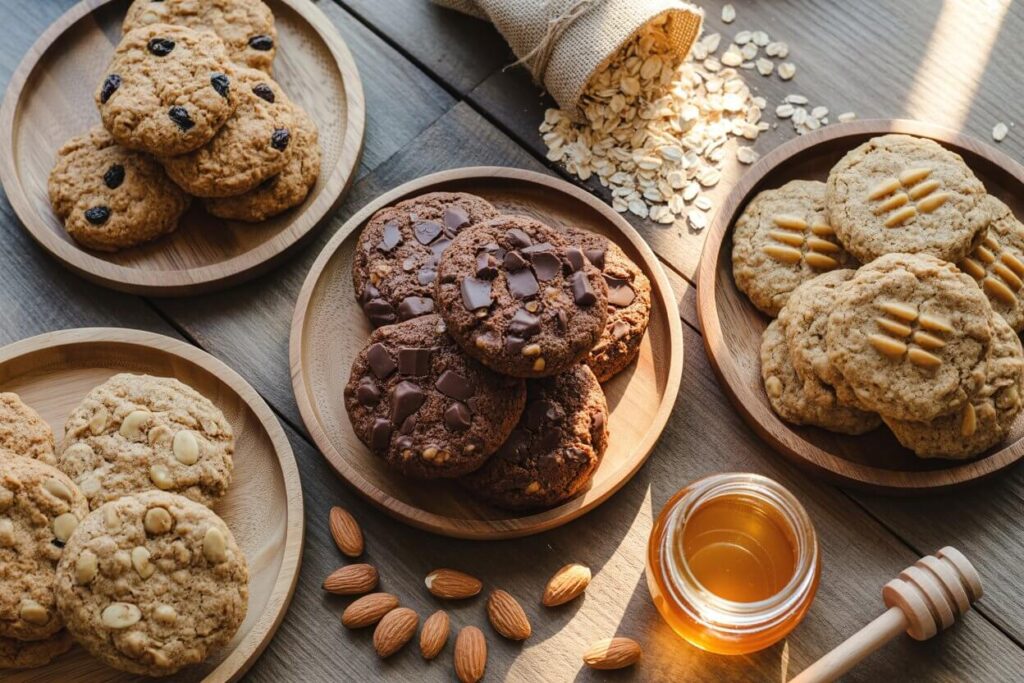
Conclusion
Healthy cookies represent the perfect intersection of nutrition and indulgence, proving that wholesome ingredients create treats just as satisfying as traditional recipes. These seven versatile recipes deliver exceptional flavor while supporting your wellness journey through nutrient-dense flours, natural sweeteners, and functional ingredients. Whether you’re reducing sugar intake, managing dietary restrictions, or simply prioritizing better nutrition, these simple formulas adapt to your specific needs without sacrificing the comforting experience of warm, freshly baked cookies.
Ready to transform your baking routine? Try your first batch this weekend and discover how delicious healthy eating truly tastes. Share your favorite variation in the comments below—we’d love to hear which recipe becomes your new go-to! Don’t forget to leave a review letting us know how these healthy cookies fit into your lifestyle. Subscribe to our blog for weekly wholesome recipes, expert nutrition tips, and exclusive content that makes wellness both achievable and delicious.
FAQs
Q: Can I make these healthy cookies without eggs?
Absolutely! Flax eggs work beautifully in most recipes (1 tablespoon ground flaxseed + 3 tablespoons water = 1 egg). Let the mixture sit for 5 minutes until gel-like before adding to your dough. Chia eggs and commercial egg replacers also produce excellent results.
Q: Why are my almond flour cookies falling apart?
This typically indicates insufficient binding or overmixing. Ensure you’re using blanched almond flour (finely ground), adding adequate eggs or flax eggs, and mixing just until combined. Chilling dough for 20 minutes before baking also improves structure.
Q: Are healthy cookies actually healthier than regular cookies?
Yes, when made with quality ingredients. Our recipes provide more fiber (2-3g vs. 0-1g), healthy fats, lower glycemic impact, and reduced refined sugar compared to traditional cookies. They also contain more vitamins, minerals, and often protein, making them more nutritionally complete.
Q: How do I make these cookies softer or crispier?
For softer cookies, underbake slightly (9-10 minutes) and store with bread slice. For crispier texture, bake 12-13 minutes until edges are golden, use less fat in the recipe, and roll dough thinner before baking.
Q: Can I use regular all-purpose flour instead of alternative flours?
You can, but nutritional benefits decrease significantly. If substituting, use 25% less all-purpose flour than almond flour by volume, and expect different texture—less tender, more cake-like. The recipes are optimized for the specified alternative flours.
Q: What’s the best natural sweetener for healthy cookies?
It depends on your goals: coconut sugar offers low-glycemic sweetness with minerals; monk fruit provides zero calories and zero glycemic impact (ideal for keto/diabetic diets); maple syrup adds moisture and distinctive flavor. Experiment to find your preference.
Q: How can I reduce calories even further?
Replace chocolate chips with cacao nibs (saves 30 calories per serving), reduce sweetener by 25% (your palate adjusts), increase fiber with additional ground flaxseed, or make smaller cookies—portion control is powerful without sacrificing enjoyment.
Q: Are these cookies kid-approved?
Definitely! Children often prefer the slightly sweeter, softer texture of healthy cookies made with dates or maple syrup. The chocolate chip and peanut butter varieties are particularly popular. Involve kids in baking to increase acceptance of nutritious ingredients





